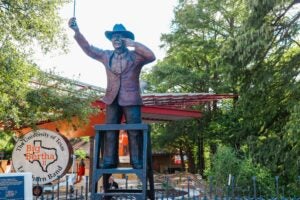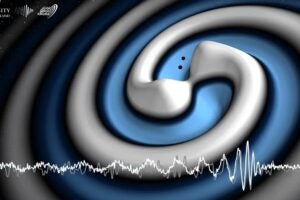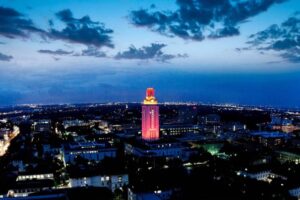AUSTIN, Texas—A powerful software package that may soon lead to quieter, more comfortable automobiles has been developed by University of Texas at Austin engineers and licensed to the world’s major automakers, says an aerospace professor who researched the problem of predicting noise and vibration in vehicles for more than a decade.
Dr. Jeffrey Bennighof copyrighted the software, called Automated Multilevel Substructuring (AMLS), in 2000. By fiscal year 2002, it was the fifth-largest moneymaker among all technologies licensed through the university, bringing $303,950 in earnings to The University of Texas at Austin.
"AMLS reduces enormously the time an engineer has to wait for complex vibration analysis jobs to finish,” he said. “Jobs that previously would have taken days in the job queue of a central supercomputer can finish in a matter of hours on a local workstation.”
Bennighof began developing this computational method for noise and vibration analysis more than 10 years ago. At first the research was funded by the U.S. Navy for analysis of submarines. Following the end of the Cold War, federal funding dropped off, but private interest soared and the focus shifted to the automotive industry.
As far as automakers are concerned, AMLS is a software tool whose time has come.
The university’s non-exclusive licensing agreement with the German-based international firm CDH GmbH was arranged last October through the university’s Office of Technology Licensing and Intellectual Property. Automobile makers that have licensed AMLS since then include Ford, Chrysler, BMW, Mercedes-Benz, Saab, Jaguar, Volvo, Mazda, Honda, Nissan, Subaru and Daihatsu.
"Noise and vibration levels have been an increasingly important selling point, and you see a lot of commercials emphasizing how quiet a car is," Bennighof said.
The two main sources of noise and shaking sensed by passengers are vibrations from the car’s engine and from the road. At one time, the manufacturer would have built and road-tested a prototype for each model, but those days are gone.
"In the car industry, there’s a lot of pressure to reduce the design cycle—the amount of time it takes from the drawing board to production,” Benninghof said. “They’ve worked very hard to get it below two years, and they can only do that by using computers to handle as much of the analysis as possible. They don’t have time to build a physical prototype of a car and test its vibration and noise performance. Instead, they have to model it via computer simulation and evaluate it numerically to predict how it will perform."
Car manufacturers have been resorting to computer modeling techniques for years. But previously available software has required extremely expensive, maintenance-intensive, liquid-cooled high speed supercomputers to run the jobs, and racked up additional high costs in disk storage space.
Bennighof said his software runs three to five times faster than previously available software. It eliminates a prior, massive data transfer bottleneck by requiring the conveyance of 40 to 50 times less data from the computer processors to the disk drives. It works by dividing a model of a car with its millions of degrees of freedom into 10,000 substructures arranged in a 20-level "tree." The models of substructures are simplified independently and then brought together again to represent the vibration of the car. When the results are plotted graphically, spikes in the response reveal resonances where improvement in the design is needed.
"An engineer designing this car would be concerned about a peak here or there, and might decide to modify the car’s design somehow to reduce those peaks, maybe by making the roof panel thicker," Bennighof said.
Computer companies as well as car companies have a stake in Bennighof’s innovation. Cray, SGI, IBM, Hewlett-Packard, Sun and NEC have all contributed funding and/or computer hardware to the research.
"They all want to make sure it performs as well as possible on their machines," Bennighof said.
For more information contact: Becky Rische, College of Engineering, 512-471-7272.



